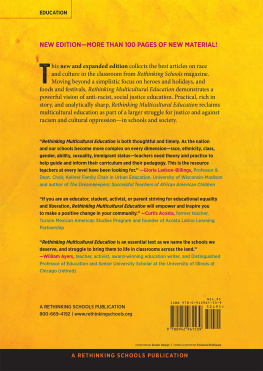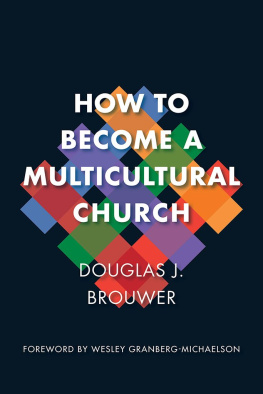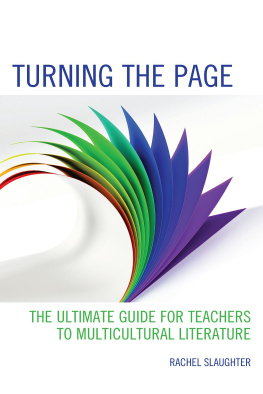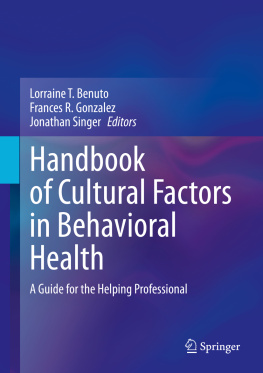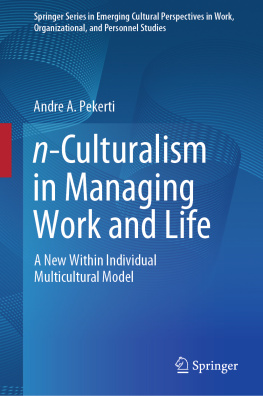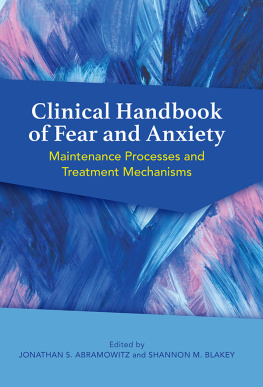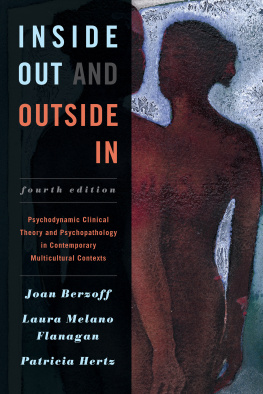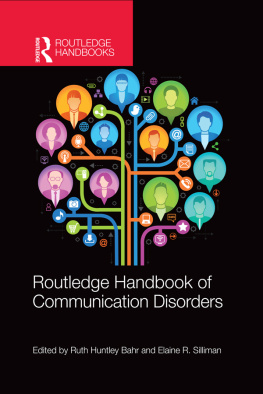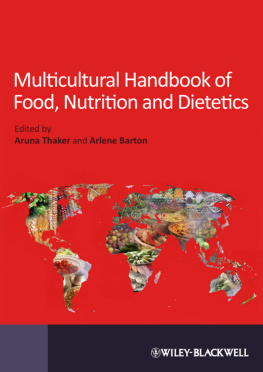Handbook of
Multicultural Measures
To the three people who have taught me the most about culture: Christina Martinez Gamst (my wife), Richard H. Dana (mentor and friend), and Frederick C. Gamst (my oldest brother).
Glenn C. Gamst
To Alison Embow (my wife) and Nathaniel Liang (my son) and my family (Shao Hay Liang, Lucy Ho, Maria, Cecilia, and Elsie), friends, and teachers (faculty, colleagues, students, and community members): Thank you for your guidance, patience, understanding, and support.
Christopher T. H. Liang
To Vahan Hamamjian (my wifes (Armine) grandfather) and Hagop Der-Garabedian (my grandfather), who not only survived the Armenian genocide but also modeled for me how to thrive in multilingual and multicultural environments.
Aghop Der-Karabetian
Handbook of
Multicultural Measures
Glenn C. Gamst
Christopher T. H. Liang
Aghop Der-Karabetian
University of La Verne

Copyright 2011 by SAGE Publications, Inc.
All rights reserved. No part of this book may be reproduced or utilized in any form or by any means, electronic or mechanical, including photocopying, recording, or by any information storage and retrieval system, without permission in writing from the publisher.
For information:
 | SAGE Publications, Inc.
2455 Teller Road
Thousand Oaks, California 91320
E-mail: | SAGE Publications India Pvt. Ltd.
B 1/I 1 Mohan Cooperative Industrial Area
Mathura Road, New Delhi 110 044
India |
SAGE Publications Ltd.
1 Olivers Yard
55 City Road
London EC1Y 1SP
United Kingdom | SAGE Publications Asia-Pacific Pte. Ltd.
33 Pekin Street #02-01
Far East Square
Singapore 048763 |
Printed in the United States of America
Library of Congress Cataloging-in-Publication Data
Gamst, Glenn.
Handbook of multicultural measures / Glenn C. Gamst, Christopher T. H. Liang, Aghop Der-Karabetian.
p. cm.
Includes bibliographical references and index.
ISBN 978-1-4129-7883-5 (cloth: acid-free paper)
1. MulticulturalismResearch. 2. MulticulturalismPsychological aspects. 3. MinoritiesResearch. I. Liang, Christopher. II. Der-Karabetian, Aghop. III. Title.
| HM1271.G36 2011 |
| 305.80015118dc22 | 2010026773 |
This book is printed on acid-free paper.
10 11 12 13 14 10 9 8 7 6 5 4 3 2 1
| Acquisitions Editor: | Kassie Graves |
| Editorial Assistant: | Courtney Munz |
| Production Editor: | Brittany Bauhaus |
| Permissions Editor: | Adele Hutchinson |
| Copy Editor: | Kim Husband |
| Typesetter: | C&M Digitals (P) Ltd. |
| Proofreader: | Theresa Kay |
| Indexer: | Sheila Bodell |
| Cover Designer: | Candice Harman |
| Marketing Manager: | Dory Schrader |
Brief Contents
Detailed Contents
Preface
T he present handbook provides a summary of some of the best multicultural instrumentation, theorizing, and research in the social, behavioral, and health-related fields. Based on our inclusion criteria, summarized in , this text offers a fairly comprehensive compendium of empirically supported multicultural instrumentation that spans the following measurement subject areas: psychometrics, cultural competence, racial identity and ethnic identity, acculturation, racism and prejudice, gender, sexual orientation, and disability.
Our pedagogical goal was to place as many multicultural instrument summaries as we could create within one text. Of course, such one-stop shopping can often yield a double-edged sword; convenience must be tempered by the realization that any multicultural measurement compendium is but the beginning of a serious and thorough literature review. Therefore, we encourage readers to examine the citations covered in the instrument summaries and chapters found throughout this handbook. It should also be noted that we are not providing the actual multicultural instrument items. The interested investigator can find them in the instruments primary references or by contacting the primary authors themselves.
We believe this handbook is suitable for a number of audiences. First, at the undergraduate level, students conducting their own original research or senior thesis should find this text a valuable resource. Second, graduate student masters thesis or doctoral dissertation research could also be informed by the multicultural overviews and instrument summaries provided herein. Third, multicultural researchers may find this text to be an authoritative and convenient means of quickly differentiating among a variety of psychometrically sound and culturally valid measurement instruments. This handbook should also provide clinical practitioners with a useful starting point in their search for multicultural assessment devices they can use with diverse clients to inform clinical treatment. We also offer practitioners a multicultural framework and case illustration (the Multicultural Assessment-Intervention Process Model) to assist in the implementation of multicultural assessment in training and service delivery in counseling centers, community mental health centers, hospitals, and so forth.
TO THE READER
This handbook assumes that you, the reader, have had at least one multicultural course at either the undergraduate or graduate level. Typically, these courses cover multicultural concepts such as racism, discrimination, acculturation, ethnic and racial identity, sexual identity, sex roles, and so on. What is typically not covered in any great detail is a review of multicultural concepts integrated within a measurement context. This handbook provides such an integration by offering the reader a psychometric overview; a conceptual framework (Multicultural Assessment-Intervention Process) that helps the reader maneuver through this complex literature; a review of key concepts and major findings for each multicultural measurement domain covered; as well as detailed summary information about each instrument included in this handbook.
As with any set of measurement instruments, caution should always be exercised in the use of these instruments to assist in clinical practice or to further our understanding of multicultural phenomena. Assessment clarity can be maximized when the practitioner or researcher is able to triangulate multiple multicultural measurement instruments during the assessment process.
Multicultural measures were included based on our inclusion criteria that we summarize in as a foundation for making informed decisions in selecting measures summarized in this handbook. Conversely, measures that were excluded simply did not meet our inclusion criteria, were developed by means of rational or theoretical bases, or were inadvertently omitted and do not necessarily indicate a lack of suitability for multicultural assessment.
Glenn C. Gamst
Christopher T. H. Liang
Aghop Der-Karabetian
University of La Verne
Acknowledgments
W e thank the many students each of us has had at the University of La Verne (in La Verne, CA). Your thoughtful questions, advice, experiences, and feedback have been absolutely invaluable. Special thanks go to four intrepid doctoral students in the Clinical-Community Psychology program at the University of La Verne: Michelle Alfaro, Rhona Harrison, Suzannia Holden, and Samantha Sharac, who devoted many hours capturing the articles, books, and measures that we subsequently summarized. Their collective positive spirit enabled us to finish this handbook.
Next page

